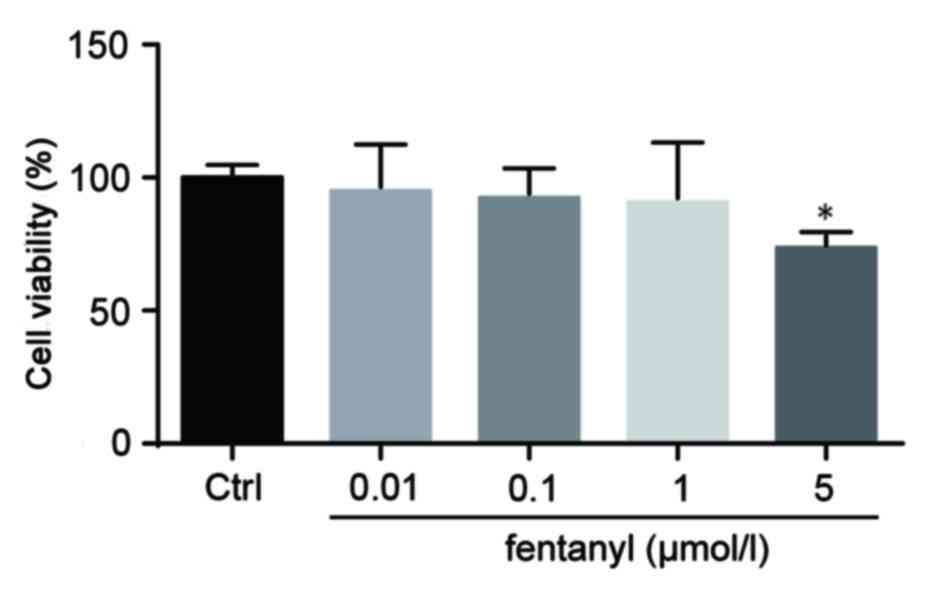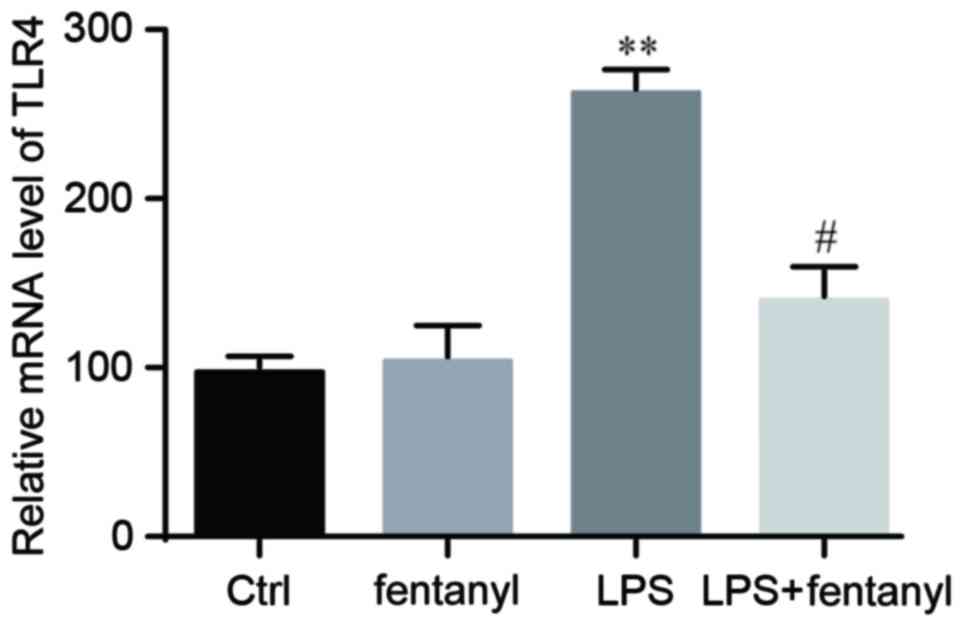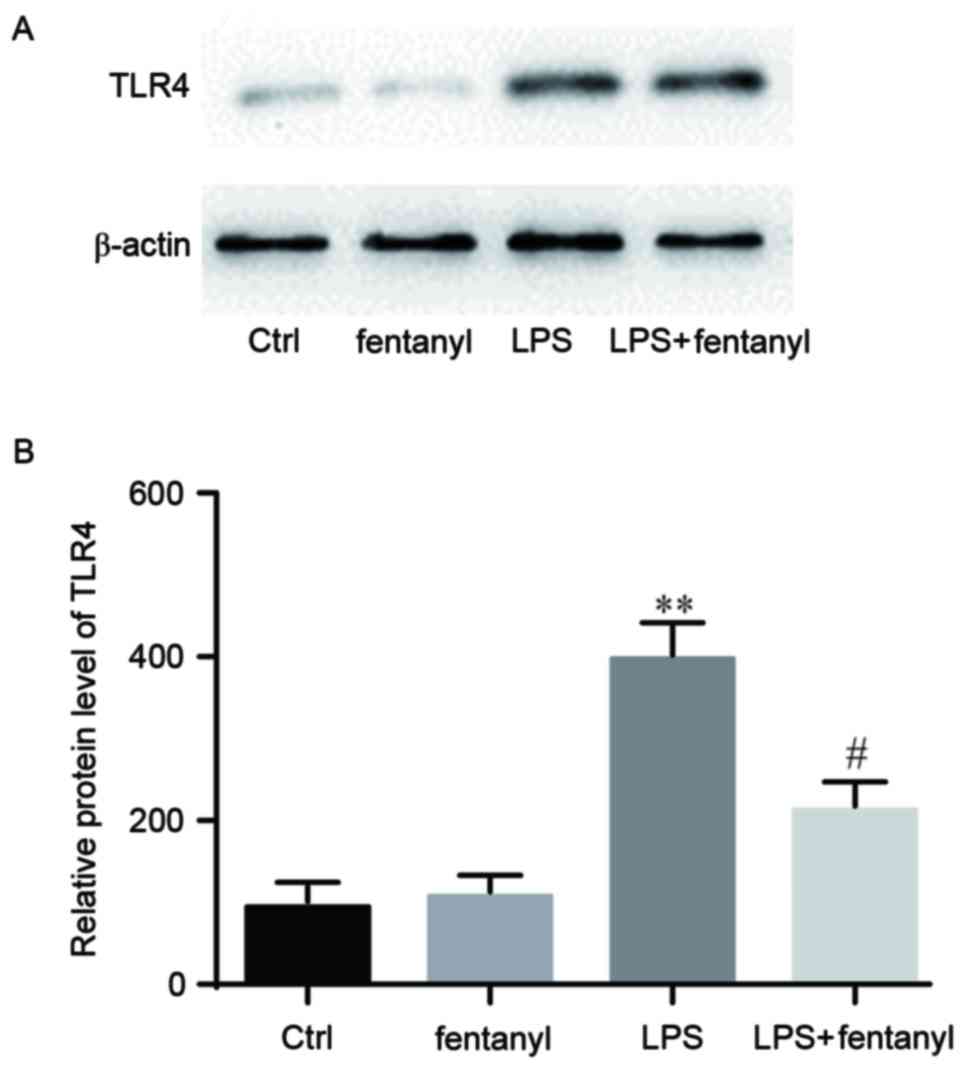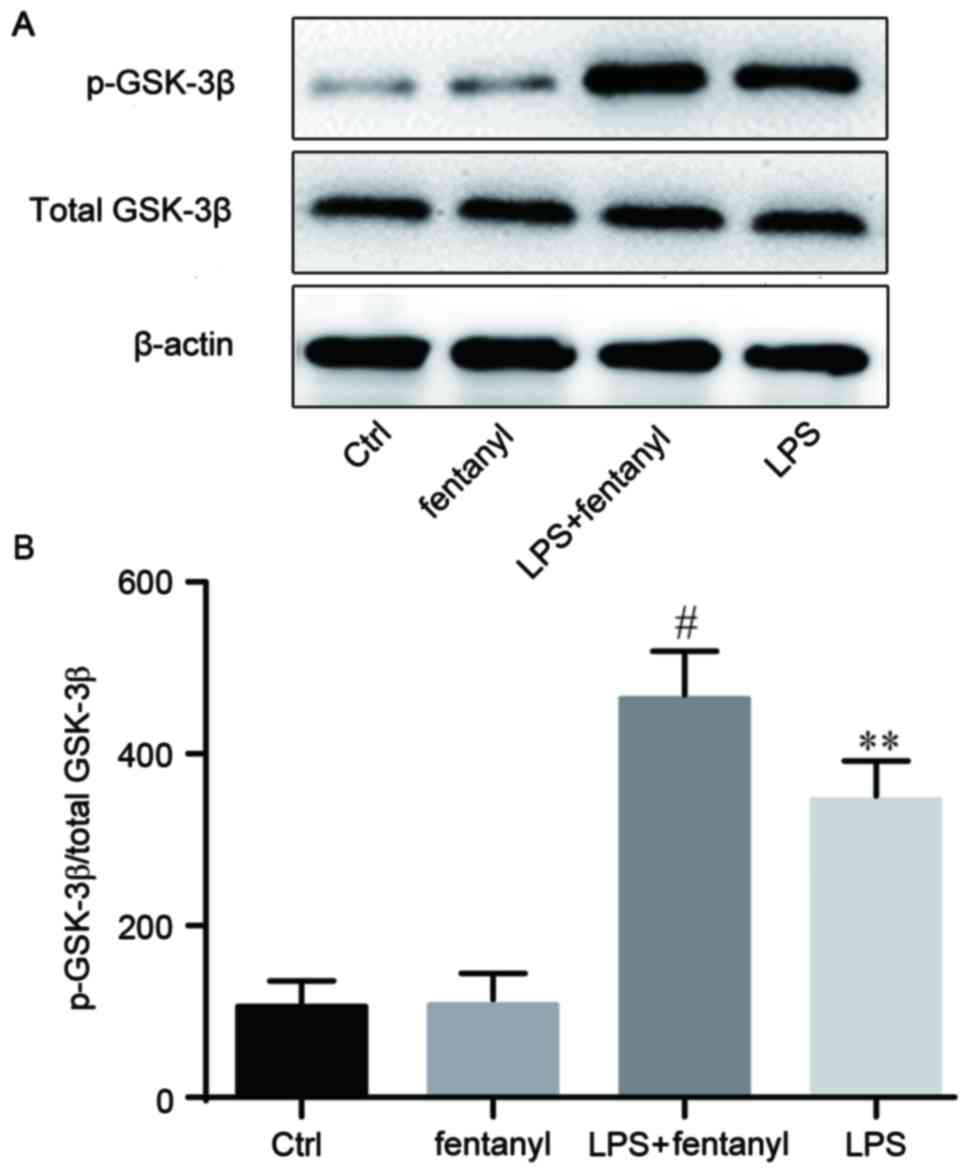|
1
|
Allan SM and Rothwell NJ: Inflammation in
central nervous system injury. Phil Trans R Soc Lond B Biol Sci.
358:1669–1677. 2003. View Article : Google Scholar
|
|
2
|
Yan A, Zhang Y, Lin J, Song L, Wang X and
Liu Z: Partial depletion of peripheral M1 macrophages reverses
motor deficits in MPTP-treated mouse by suppressing
neuroinflammation and dopaminergic neurodegeneration. Front Aging
Neurosci. 10:1602018. View Article : Google Scholar : PubMed/NCBI
|
|
3
|
Baltuch GS: Microglia as mediators of
inflammatory and degenerative diseases. Annu Rev Neurosci.
22:219–240. 1999. View Article : Google Scholar : PubMed/NCBI
|
|
4
|
Lucas SM, Rothwell NJ and Gibson RM: The
role of inflammation in CNS injury and disease. Br J Pharmacol. 147
Suppl 1:S232–S240. 2006. View Article : Google Scholar : PubMed/NCBI
|
|
5
|
Theoharides TC, Asadi S and Patel AB:
Focal brain inflammation and autism. Neuroinflamm. 10:462013.
View Article : Google Scholar
|
|
6
|
Auriel E, Regev K and Korczyn AD:
Nonsteroidal anti-inflammatory drugs exposure and the central
nervous system. Handb Clin Neurol. 119:577–584. 2014. View Article : Google Scholar : PubMed/NCBI
|
|
7
|
Bacchi S, Palumbo P, Sponta A and
Coppolino MF: Clinical pharmacology of non-steroidal
anti-inflammatory drugs: A review. Antiinflamm Antiallergy Agents
Med Chem. 11:52–64. 2012. View Article : Google Scholar : PubMed/NCBI
|
|
8
|
Qin L, Wu X, Block ML, Liu Y, Breese GR,
Hong JS, Knapp DJ and Crews FT: Systemic LPS causes chronic
neuroinflammation and progressive neurodegeneration. Glia.
55:453–462. 2007. View Article : Google Scholar : PubMed/NCBI
|
|
9
|
Wilms H, Sievers J, Rickert U,
Rostami-Yazdi M, Mrowietz U and Lucius R: Dimethylfumarate inhibits
microglial and astrocytic inflammation by suppressing the synthesis
of nitric oxide, IL-1beta, TNF-alpha and IL-6 in an in-vitro model
of brain inflammation. J Neuroinflamm. 7:302010. View Article : Google Scholar
|
|
10
|
Choi Y, Lee MK, Lim SY, Sung SH and Kim
YC: Inhibition of inducible NO synthase, cyclooxygenase-2 and
interleukin-1beta by torilin is mediated by mitogen-activated
protein kinases in microglial BV2 cells. British J Phamrmacol.
156:933–940. 2009. View Article : Google Scholar
|
|
11
|
Blasi E, Barluzzi R, Bocchini V, Mazzolla
R and Bistoni F: Immortalization of murine microglial cells by a
v-raf/v-myc carrying retrovirus. J Neuroimmunol. 27:229–237. 1990.
View Article : Google Scholar : PubMed/NCBI
|
|
12
|
Ooi YY, Ramasamy R, Rahmat Z, Subramaiam
H, Tan SW, Abdullah M, Israf DA and Vidyadaran S: Bone marrow
derived mesenchymal stem cells modulate BV2 microglia responses to
lipopolysaccharide. Int Immunopharmacol. 10:1532–1540. 2010.
View Article : Google Scholar : PubMed/NCBI
|
|
13
|
Nelson L and Schwaner R: Transdermal
fentanyl: Pharmacology and toxicology. J Med Toxicol. 5:230–241.
2009. View Article : Google Scholar : PubMed/NCBI
|
|
14
|
Johnston KD: The potential for mu-opioid
receptor agonists to be anti-emetic in humans: A review of clinical
data. Acta Anaesthesiol Scand. 54:132–140. 2010. View Article : Google Scholar : PubMed/NCBI
|
|
15
|
Dahan A, Sarton E, Teppema L and Olievier
C: Sex-related differences in the influence of morphine on
ventilatory control in humans. Anesthesiology. 88:903–913. 1998.
View Article : Google Scholar : PubMed/NCBI
|
|
16
|
Sarton E, Teppema L and Dahan A: Sex
differences in morphine-induced ventilatory depression reside
within the peripheral chemoreflex loop. Anesthesiology.
90:1329–1338. 1999. View Article : Google Scholar : PubMed/NCBI
|
|
17
|
Stein C, Clark JD, Oh U, Vasko MR, Wilcox
GL, Overland AC, Vanderah TW and Spencer RH: Peripheral mechanisms
of pain and analgesia. Brain Res Rev. 60:90–113. 2009. View Article : Google Scholar : PubMed/NCBI
|
|
18
|
Watkins LR, Maier SF and Goehler LE:
Immune activation: The role of pro-inflammatory cytokines in
inflammation, illness responses and pathological pain states. Pain.
63:289–302. 1995. View Article : Google Scholar : PubMed/NCBI
|
|
19
|
McNally L, Bhagwagar Z and Hannestad J:
Inflammation, glutamate, and glia in depression: A literature
review. CNS Spectr. 13:501–510. 2008. View Article : Google Scholar : PubMed/NCBI
|
|
20
|
Tan SW, Ramasamy R, Abdullah M and
Vidyadaran S: Inhibitory effects of palm α-, γ- and δ-tocotrienol
on lipopolysaccharide-induced nitric oxide production in BV2
microglia. Cell Immunol. 271:205–209. 2011. View Article : Google Scholar : PubMed/NCBI
|
|
21
|
Łabuzek K, Liber S, Gabryel B and Okopień
B: AICAR (5-aminoimidazole-4-carboxamide-1-beta-4-ribofuranoside)
increases the production of toxic molecules and affects the profile
of cytokines release in LPS-stimulated rat primary microglial
cultures. Neurotoxicology. 31:134–146. 2010. View Article : Google Scholar : PubMed/NCBI
|
|
22
|
Gui B, Su M, Chen J, Jin L, Wan R and Qian
Y: Neuroprotective effects of pretreatment with propofol in LPS
induced BV-2 microglia cells: Role of TLR4 and GSK-3β.
Inflammation. 35:1632–1640. 2012. View Article : Google Scholar : PubMed/NCBI
|
|
23
|
Livak KJ and Schmittgen TD: Analysis of
relative gene expression data using real-time quantitative PCR and
the 2(-Delta Delta C(T)) method. Methods. 25:402–408. 2001.
View Article : Google Scholar : PubMed/NCBI
|
|
24
|
Crozier TA, Müller JE, Quittkatt D,
Weyland W, Sydow M, Wuttke W and Kettler D: Interleukin-1 beta and
interleukin-6-plasma concentrations in laparotomies. Interaction
with neuroendocrine secretion and postoperative temperature
regulation? Anaesthetist. 42:343–349. 1993.(In German).
|
|
25
|
Grivennikov SI, Tumanov AV, Liepinsh DJ,
Kruglov AA, Marakusha BI, Shakhov AN, Murakami T, Drutskaya LN,
Förster I, Clausen BE, et al: Distinct and nonredundant in vivo
functions of TNF produced by t cells and macrophages/neutrophils:
Protective and deleterious effects. Immunity. 22:93–104. 2005.
View Article : Google Scholar : PubMed/NCBI
|
|
26
|
Marie C, Pitton C, Fitting C and Cavaillon
JM: IL-10 and IL-4 synergize with TNF-alpha to induce IL-1ra
production by human neutrophils. Cytokine. 8:147–151. 1996.
View Article : Google Scholar : PubMed/NCBI
|
|
27
|
Owens T, Babcock AA, Millward JM and
Toft-Hansen H: Cytokine and chemokine inter-regulation in the
inflamed or injured CNS. Brain Res Brain Res Rev. 48:178–184. 2005.
View Article : Google Scholar : PubMed/NCBI
|
|
28
|
Morzaev D, Nicholson JD, Caspi T, Weiss S,
Hochhauser E and Goldenberg-Cohen N: Toll-like receptor-4 knockout
mice are more resistant to optic nerve crush damage than wild-type
mice. Clin Exp Ophthalmol. 43:655–665. 2015. View Article : Google Scholar : PubMed/NCBI
|
|
29
|
Lehnardt S, Lachance C, Patrizi S,
Lefebvre S, Follett PL, Jensen FE, Rosenberg PA, Volpe JJ and
Vartanian T: The toll-like receptor TLR4 is necessary for
lipopolysaccharide-induced oligodendrocyte injury in the CNS. J
Neurosci. 22:2478–2486. 2002. View Article : Google Scholar : PubMed/NCBI
|
|
30
|
Hwang D: Modulation of the expression of
cyclooxygenase-2 by fatty acids mediated through toll-like receptor
4-derived signaling pathways. FASEB J. 15:2556–2564. 2001.
View Article : Google Scholar : PubMed/NCBI
|
|
31
|
Willis LM, Bielinski DF, Fisher DR,
Matthan NR and Joseph JA: Walnut extract inhibits LPS-induced
activation of BV-2 microglia via internalization of TLR4: Possible
involvement of phospholipase D2. Inflamm. 33:325–333. 2010.
View Article : Google Scholar
|
|
32
|
Barsness KA, Arcaroli J, Harken AH,
Abraham E, Banerjee A, Reznikov L and McIntyre RC:
Hemorrhage-induced acute lung injury is TLR-4 dependent. Am J
Physiol Regul Integr Comp Physiol. 287:R592–R599. 2004. View Article : Google Scholar : PubMed/NCBI
|
|
33
|
Hu X, Paik PK, Chen J, Yarilina A,
Kockeritz L, Lu TT, Woodgett JR and Ivashkiv LB: IFN-gamma
suppresses IL-10 production and synergizes with TLR2 by regulating
GSK3 and CREB/AP-1 proteins. Immunity. 24:563–574. 2006. View Article : Google Scholar : PubMed/NCBI
|
|
34
|
Rodionova E, Conzelmann M, Maraskovsky E,
Hess M, Kirsch M, Giese T, Ho AD, Zöller M, Dreger P and Luft T:
GSK-3 mediates differentiation and activation of proinflammatory
dendritic cells. Blood. 109:1584–1592. 2007. View Article : Google Scholar : PubMed/NCBI
|



















